Crazy Year in Silver Leaves Supply Deficit - Weekly Wrap Up

Did you know you can get the Sprott Money Weekly Wrap Ups, Ask The Expert,
special promotions and insightful blog posts sent right to your inbox?
Sign up to the Sprott Money Newsletter here.
The precious metals have had a nice rally over the last week and a half, with silver looking especially encouraging. Are we setting up for a good month of April? Host Craig Hemke sits down with mining executive and market analyst David Jensen to break down all the gold and silver news you need to understand the latest moves in the metals.
In this edition of The Weekly Wrap Up, you’ll hear:
- Two indicators that silver shortages are coming
- The “elephant” on the head of silver and silver investors
- Plus: Endeavour Silver’s announcement and what it means for you
“Touching on your inflation number, inflation is at least 10% in reality, and I don’t know what kind of psychedelics they’re using at the Fed, but they’re pretty good for them to say that it’s as low as it is. And silver, in particular, should be absolutely flying in this environment, and the fact that it’s mired in the paper morass that it’s in is just incredible to see…”
To hear David’s full thoughts on this week’s gold and silver news, listen here:
Announcer: You're listening to the "Weekly Wrap-Up" on Sprott Money News.
Craig: Hello again, from Sprott Money News, it's sprottmoney.com. It's Friday, April 9th, 2021. It is, of course, time for your "Weekly Wrap-Up." I'm your host, Craig Hemke. As you know, Eric Sprott has been on a hiatus for the last several months. We hope to have him back soon. We've had a steady stream of high-quality guest hosts for this "Weekly Wrap-Up." We've got a new one for you today. His name is David Jensen. We're very excited to have him join us in the "Weekly Wrap-Up" chair this week. David, of course, a money executive and metals market analyst, currently runs two private mining companies. He's definitely qualified to give his opinions here. If you enjoy our "Weekly Wrap-Up" or any of our podcasts, please give us a like, maybe a share, even a subscribe to whatever channel you're listening to. It'll help us get the word out. David, thank you so much for joining me today.
David: Good morning, Craig. It's great to be with you today.
Craig: And we have no shortage of stuff to talk about. Again, as we get going, remember, these broadcasts are brought to you by Sprott Money. Should be your preferred dealer for both physical metal, but also physical metal fully allocated storage. You can find out about all of our current deals by going to sprottmoney.com. But, of course, you can always pick up the phone and call us at 888-861-0775. Before I get to David, I just want to point out a couple of things about price this week. We've had a very nice rally over the last week and a half or so as longer-term interest rates in the U.S. have come down. And the dollar has pulled back as well. We're breaking some downtrend lines and the silver, in particular, looks encouraging as it has broken its downtrend line from the short squeeze high above 30 on February the first, and it also has held support now of its 200-day moving average, looking like it wants to move higher. So, perhaps we'll have a good month of April. We will continue to watch the inflation data. The inflation at the wholesale level came out today in the U.S. with a month over month number that was plus 1% and a year over year number that's 4.2%. Chairman Powell told us himself a couple of weeks ago, told us that we should expect higher inflation, if anything, because when you calculate your annualized last 12 months rolling average inflation, last March and last April in the throes of the COVID crisis, were deflationary numbers either zero or slightly negative. As last March and April come off of that 12-month average, and get replaced with this March and this April, that stated inflation number is going to spike.
So, be aware of that. We had the PPI today. We'll get the CPI coming up on Tuesday. That'll be a big story next week. And I'm sure we'll be talking about the price action in the precious metals next week in the "Weekly Wrap-Up" too. But again, we're closing up a good week this week with positive price action and some green candles on the weekly chart. With that, let's turn to David Jensen. David, I know you've got a lot on your mind. This has been a crazy year so far particularly in silver, which has a finite amount of silver that comes out of the ground every year, a pretty consistent amount that gets refined as well and recycled. Maybe put it all together, maybe it's a billion ounces a year. We chew up about 600 million ounces a year. Excuse me. In industrial demand that gets consumed leaving 350, maybe million ounces a year for investment demand. And if investment demand exceeds that, all of a sudden we've got a supply deficit. That's where we're running, and the stories and the anecdotal evidence of supply deficits and supply shortages are getting a little more lengthy by the day. I'm sure you've got some thoughts on this. Where do you see things here in early April?
David: Well, you know, touching on your inflation number, you know, inflation is at least 10% in reality, and I don't know what kind of psychedelics they're using at the fed, but they're pretty good for them to say that it's as low as it is. And silver, in particular, should be absolutely flying in this environment. And then the fact that it's mired in the paper morass that it's in, it's just incredible to see, Craig. You know, the two things that really hit us this year so far that are really standouts in terms of changing the market and you know, as we've talked about before you and I, that the paper game continues until there's physical shortage. And then you lose control of the ability to set the price with digital contracts or paper contracts, as we saw in palladium. It had a 5X move after 2016, after the shortages hit. And you know, the two indicators that I see that the shortages are coming and that they should be coming out as fast and furious is number one, the statement by Jeff Currie, you know, back in February of Goldman Sachs, that the ETFs were shorting the silver that belonged to their shareholders into the market after they bought it, number one.
And then number two, is the run on the unallocated accounts. As people are becoming aware that an unallocated account is a promise to try to buy you some metal in the future if you choose to convert it into allocated account. So, you know, both of those, you know, Currie's statement, because it really lifts the veil on the ETFs and what everybody had feared had been going on, it's very interesting that Goldman didn't respond after Currie's statement. BlackRock, who is the sponsor of the SLV ETF didn't say a peep. Bank of New York Mellon who are the trustee, didn't say anything. And JPMorgan who are the custodian for SLV, didn't say a thing. And it was such a shock through the industry that you would have expected that there would have been statements to clarify what Currie had said because not only is it of concern to shareholders, but it's also illegal to sell something that belongs to something else into the market. So, I've got to believe that they are moving. They have to cover this in some way in terms of lessening their liability to shareholders, because people are going to pursue this, and are going to continue to pursue this in the future. And the unallocated accounts, the movement to secure allocated physical metal, as people become aware of the problems that we're seeing at the Perth Mint.
Very interesting that the Royal Mint in the UK is no longer selling bars. And, you know, the LBMA keeps talking about how deep and liquid their silver market is there in London, you know, with over a billion ounces in their vaults. And yet somehow, the Royal Mint can't you know, produce enough bars that they can continue to sell these retail products to the market. I mean, it's all right there, they should be able to just spit this stuff out and supply the market. So, you know, and going back to the problems that we saw with SLV in terms of the run in February, and, you know, you've touched on this that there was 110 million ounces in three days that poured into the SLV.
Craig: Allegedly.
David: Allegedly, yeah, exactly. So, you know, if we look at the holdings of the LBMA at the vaults in London, it's in round numbers about a billion ounces, and Ronan Manly, there at BullionStar pointed out that about 85% of that is held by the ETFs already. So, that would leave around 150 million ounces that should not be available to the market. And if you look at a couple of things are notable about that, Craig, is that at the beginning of February, the LBMA came out and was saying, oh, you know, we traded a billion ounces here in the LBMA yesterday, and this shows how liquid we are and how fantastic the market is. But if you've got like 150 million ounces in your vaults, a fraction of which is available to market, right, you've got 850 held by the ETFs, 150 left over, and of that 150, not all of that is going to be available for sale under the markets. Maybe you have 50 million ounces available, and they're trading 20 times that in a day in terms of the contracts that are trading in London. So, that tells us that there's a real serious problem. And, you know, if there was, let's say 50 million or 75 million ounces of the, you know, the delta, the 150 that's remaining, how does SLV gain 110 million ounces in three days?
I mean, if you looked at importing that amount 110 million ounces, just to put it in perspective, there would have been 340 armored trucks that would have had to gone from the airport into the SLV into the London vaults of JPMorgan and the others. So, I mean, and if they floated into the London City Airport, it would have looked like the Berlin Airlift all over again. Right?
Craig: Right.
David: I mean, it's incredible to move that amount of metal. So, we've got real questions here that just haven't been answered, Craig. And, you know, overall, if you just take the month end numbers that we get from the LBMA and the month end numbers we get from SLV, I mean, SLV does it daily, but LBMA doesn't, I mean, there was at least 50 million ounces that would have had to have been moved...sorry, 72 million ounces that would've had to have been moved into London. And the LBMA data is just showing about 21 million ounces in terms of the increase in vault holdings over four months from November through to February. So, the numbers just don't add up. And you know, we're seeing this movement into physical metal with the Wall Street silver movement, and I just don't think it's going to stop. And I think that there's tremendous shortages out there in the market. And the fact that the Mexican Mint stops producing and the Royal Mint now is seizing up on the bars, there is serious trouble coming, my friend.
Craig: U.S. Mint as well. We'll add them to the...put that log on the fire. And as you said, people are figuring out. Things like the SLV, if you say, "Oh yeah, I own silver. I own the SLV." You don't own anything. You want exposure to price. You know, if silver goes up or silver goes down, that price that's determined through the trading of the futures contracts, and you've got that. But you don't own silver. And people are figuring that out now with the unallocated accounts too. Look, I understand why someone would buy an unallocated account. They think they can come get their silver, you know, in the future if they ever actually want it. But in the meantime, they save on insurance costs, they save on storage costs, and the rest. But again, what do they really have in real-time? They have exposure to price and that's really it.
David: Right. And I think that the telling number for me is that, you know, as a point of reference, I use about 50 to 100 million ounces of liquid silver available in London. And the fact that you've got these two issues with the ETFs potentially having sold two times the silver that they hold. And then the problem with the unallocated accounts trying to roll it into allocated metal for delivery. We've got you know, serious [inaudible 00:11:34] in London is the physical metal market. The COMEX is not the source for metal globally and physical trading. And the fact that these numbers are so tiny in London is that, you know, we've got various serious movement coming up in this market in terms of both availability and the price movement should start thereafter. But you know, the fact that the market's still stuck in the $25 range is just to me, there's a complete disconnect there. And it's almost like this elephant is just absolutely sitting on the head of silver and silver investors. But it will be removed by a physical shortage. And it is interesting to see the cutting off of supply of metal from these major sources.
Craig: And I want to go back to palladium because you and I watch palladium very closely from 2016 to 2020, and now it's even moving up again now in 2021. But what happened there was a removal of metal from London as you know, supply shortages emerged because Russia was a big global supplier of palladium, and they kind of stepped back from the market it seemed. And then you had wholesale demand, industrial demand for palladium rising at the same time. And all of a sudden, the banks that, again, just as the same banks that make the markets and run the markets in New York and London in gold and silver, they do it in palladium too. And they were forced out of that market and open interest fell, bank net positions basically evaporated back to neutral, and price moved toward just physical pricing. And we've seen palladium, as you said, go up four to five times in a period of what, about three years maybe.
David: Yup, absolutely. And if we look at things like iridium, I mean, it's now trading at 6,000 bucks an ounce, and that was like a fraction of that number just a few months ago. In December, it started to move up. I'll just pull up a price chart here. Just to give you a sense of how these markets move, it's 6,200 bucks an ounce now. At the end of last year, it was in December, it was about $1,700. And so, this is what happens with metal markets where there's an actual shortage. You've seen it in iridium, you've seen it in rhodium, which are both platinum group metals. You've seen it in palladium that, you know, with the printing of money, that the real physical assets start to disappear from the market. And it's a form of Gresham's law if you will, that bad money drives out good and that bad money or bad currency drives out good assets is that these assets just dry up. And historically, it was platinum that moved first, silver that moved second, and then gold that moves third in the 1970s when the prices started to run. And this is exactly what we would be expected to see now is that the most rare, metals that are more difficult to get into the market are the ones that are going to move up in price first. And, you know, lo and behold, we're seeing it. And it's just a question of time until the physical demand starts to short circuit this paper market in London, especially, and then also in New York. It's going to drive the price much, much higher.
Craig: And I think what you're saying, David, is, you know, there's a time and a place when unallocated accounts and ETFs and just simple price exposure, that's fine, you know, if that's all you're looking for there, there's a time and a place where that's fine and works just fine. That right now is not...we're not in that time and place I think is your message.
David: Exactly. And I, you know, coming from the mining industry, I'm a big fan of mining shares, but given the current backdrop of the problems in the banks, and seeing how leveraged they are to loans and bonds as their assets, it's over 90% of their assets is very typical for a bank to have bonds and loans on that level is that as you have a decline in the economy, the banks become destabilized and you [inaudible 00:15:51] a few people understand that here in Canada, we passed a bank bail-in law back in October, 2016. And it just has happened in Cyprus and in Greece. It allows the bank to seize assets of the depositors in order to make itself whole. Now, right now, it doesn't let you seize the assets of a bank depositor or it can't do that according to the regulations, but the law is written up so that the cabinet can change the regulations by what's called an Order in Council, so by bypassing an edict by a cabinet resolution that can change the rules of this bank bail-in act. And that's one of my concerns here is that people are you know, looking with great faith at stocks, and unallocated accounts, and these other things without realizing that if they're held in the systemically important banks here in Canada, that Canada can enact the bank bail-in laws in an extreme emergency with Order in Council to seize assets. And that's something I think people should keep in mind here is that, you know, I went from being really gung-ho on the mining shares you know, four or five years ago to being very circumspect now because of the passage of this law. Seeing that the Trudeau government is a fan of passing Orders in Council, they took away the right to own what are called assault rifles here in Canada over a weekend with a no debate and no law passed. And it's something that I'm really watching with a close eye here, Craig.
Craig: Yeah, yeah. What do they say? Possession 90% of the law, something like that? Get it into your possession. If there's ever a time to get into your possession it's now. And there are even bank...I remember hearing stories. What? I know they're getting out of the bullion bank business, but didn't Scotiabank used to run certificate programs too?
David: Yes, they did. And they had ScotiaMocatta, which was, I believe almost a 300-year-old company and they shut it down last December, which is very strange. They tried to sell it for a year and a half, but nobody wanted to get into the bullion banking business in the middle of one of the biggest bull markets in history, which tells us something.
Craig: Yeah. Hey, David, in our time remaining, I want to get your thoughts on one other thing that happened yesterday. As a mining executive yourself, what do you think of the announcement of Endeavour Silver? One of the few primary silver miners that are out there. They announced yesterday in their first-quarter production report that they produced about 1.1-1.2 million ounces of silver, but they only sold into the market about half of that retaining the other half in inventory, because in their words, they felt prices were depressed and they were going to hold out for higher prices. Now, we've already got, obviously, a tight global situation for silver, and now we've got maybe some mining companies that could exacerbate that issue. What do you think of it as a business model to hold it back, but what do you think about the news, in general?
David: I think it's essential for mining companies if they want to protect the interests of their shareholders, not to be selling their metal through these virtual digital markets, which misprice and suppress the prices of gold and silver. The whole scheme, Craig, in London and New York wouldn't work if the mining companies refused to sell through those vehicles, through the bullion banks into these digital markets. The whole system only works with the cooperation of mining executives. So, I think it's absolutely essential. You know, Rob McEwen started out Goldcorp that way too. He would hold back. There was pictures of him sitting on pallets of gold, and he'd be like, we're not selling this month because the price is too low, we're going to sell when the price goes higher. And, you know, the whole scheme only works while the miners provide the physical bullion to the LBMA and to the COMEX for them to play with the price. And once they stop doing that, the pricing system falls apart because it's the only thing that gives it legitimacy is when you can actually secure physical bullion at the artificial prices that they set. So, I think it's a brilliant move. Anything you can do to reduce the flow to New York and London to get, you know, honest price discovery based on supply and demand is a good thing.
So, you know, kudos to the board there and to the CEO of Endeavour. You know, I'd like to see a miner's auction. I made a presentation in 2016 to the Canadian Institute of Mining saying, it's essential that the miners start up a mining auction system where, you know, monthly or bi-weekly or whatever, they sell their metal into the market on an open auction basis to the highest bidder and that they get away from these digital exchanges. But, you know, we've seen just absolutely no movements now from the miners. So, look forward to seeing that in the future, hopefully.
Craig: Yeah. I'd say we thank Endeavour Silver for doing that. We think Keith Neumeyer at First Majestic doing the same, and any other encouragement we can give to any of these other miners to do what you said, yeah. Cut out those bullion banks that aren't in it... They're not these like benevolent altruistic organizations that are just there to help, right? They want to keep the mining companies as slaves to the system. So, if we can encourage them in any way to work around that system, I think it's great. David, anything else on your mind before we wrap up?
David: No, just you know, finishing off that thought. There is the entire speculative bubble that ran since the LBMA was created 1987, the whole speculative bubble was of low-interest rates and massive liquidity injected by central banks only could work while the price of gold and silver were suppressed. Gold and silver moved up 9, 10 times...sorry, Gold moved up from 42 bucks an ounce to 850 an ounce over 9 years in the '70s and it drove interest rates to 19% before they could pull people out of gold and silver back into bonds again. And since that time with the creation of the LBMA and the COMEX with their digital trading, they've been able to run interest rates down to 0% with no meaningful move upwards. Like, we should be five times the current metal prices right now you know, given the wildly inflated monetary policy that's underway with the monopoly money system we have. And we are going to see that type of price movement that's going to happen due to shortage. But anything that can be done to stop this stripping of wealth of citizens with this digital pricing system is encouraged
Craig: I'm with you 100% on that, my friend. Well, we've spent a lot of time this morning talking about silver and how hard it is to find in a global wholesale supply squeeze, a little shortage. And how now is the time to get some in your hands. And I'll tell you, if you want to get some in your hands, we do currently have some at Sprott Money, Royal Canadian Mint Gold and Silver Maples. We've even got a few hundred-ounce silver bars, and our bestseller Sprott Silver Rounds as well. Very well-priced at sprottmoney.com. You can buy them directly online. But if you want to talk to a human being and you have some questions before making a purchase, just give us a call. Again, that number 888-861-0775, and somebody from the Sprott Money team will be happy to help you. Again, we've been speaking with David Jensen, an old friend of ours, a mining executive and metals market analyst. Good guy to know, good guy to follow on Twitter. If you're on Twitter, he's always got some good information he's posting there. So, we'll make sure we keep in touch with David. For now, though. David, thank you so much for your time.
David: Thank you for your time, Craig.
Craig: And from all of us here at Sprott Money News and sprottmoney.com, thank you for listening. Have a great weekend.
Don’t miss a golden opportunity.
Now that you’ve gained a deeper understanding about gold, it’s time to browse our selection of gold bars, coins, or exclusive Sprott Gold wafers.
About Sprott Money
Specializing in the sale of bullion, bullion storage and precious metals registered investments, there’s a reason Sprott Money is called “The Most Trusted Name in Precious Metals”.
Since 2008, our customers have trusted us to provide guidance, education, and superior customer service as we help build their holdings in precious metals—no matter the size of the portfolio. Chairman, Eric Sprott, and President, Larisa Sprott, are proud to head up one of the most well-known and reputable precious metal firms in North America. Learn more about Sprott Money.
Learn More
You Might Also Like:




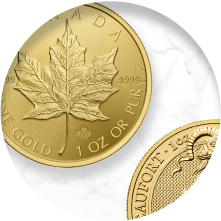



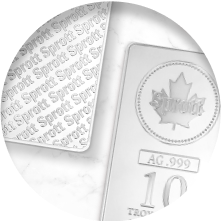

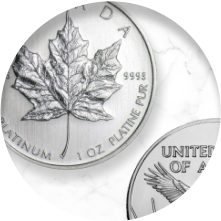

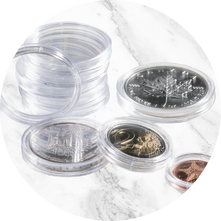
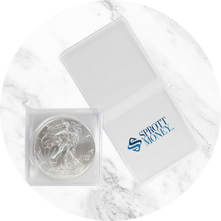



Looks like there are no comments yet.